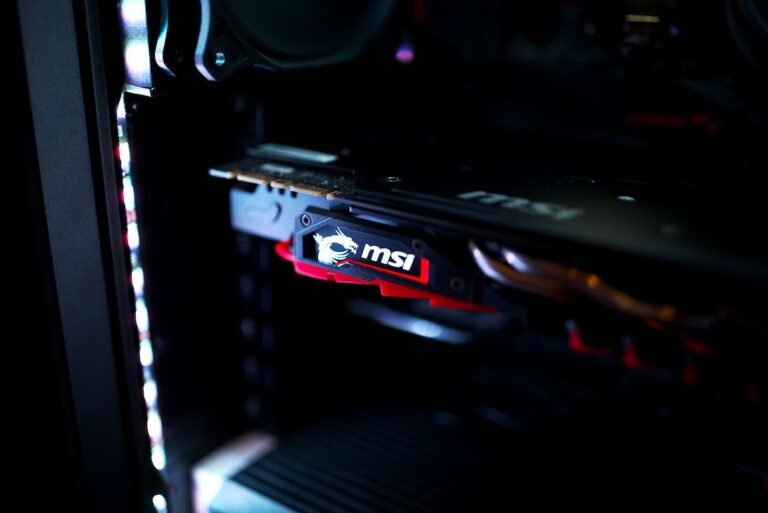Introduction
Have you ever taken a look at your router and wondered what those little LED lights mean? You’re not alone! Understanding and interpreting router LED lights can be a bit confusing for many people. But fear not, because in this comprehensive guide, we will demystify the world of router LED lights and help you make sense of those blinking, flickering, and solid lights.
Router LED lights serve as a communication tool between your router and you, the user. They indicate the status and activity of different functions within your router, providing essential information about network connectivity, Wi-Fi signals, internet access, and more. By understanding what these lights mean, you can troubleshoot issues, monitor your network’s performance, and ensure a smooth internet experience.
So, let’s dive in and unravel the secrets behind router LED lights!
Understanding Router LED Lights
Power LED
The power LED is perhaps the most straightforward indicator on your router. It simply tells you whether the router is receiving power or not. When the power LED is solid green, it means the router is turned on and functioning correctly. If the LED is off, it indicates a power outage or a faulty power connection. In some cases, routers may have a different color for the power LED, such as blue or orange, so make sure to consult the user manual for specific details.
LAN/Wired Connection LED
The LAN (Local Area Network) or Wired Connection LED is responsible for indicating the status of the wired connections on your router. This LED typically has multiple lights, each corresponding to a specific wired port on the router. When a device is connected to a port and the connection is established, the respective LED will light up, usually in a solid or blinking manner.
If you notice that the LED for a specific port is not lit, it could indicate a problem with the wired connection. Check the cable connections, ensure that the device is properly connected, and confirm that the Ethernet adapter is enabled on the device.
WAN/Internet LED
The WAN (Wide Area Network) or Internet LED provides information about the status of your internet connection. When the LED is solid or blinking green, it means that your router has successfully established a connection to the internet. A slow blink or a different color, such as orange, may indicate a connection issue or that the router is in the process of establishing a connection.
If the WAN/Internet LED is off or continuously blinking, it might suggest a problem with your internet service provider or a misconfiguration on your router. In such cases, you can try restarting the router, checking the cable connections, or contacting your internet service provider for further assistance.
WLAN/Wi-Fi LED
The WLAN (Wireless Local Area Network) or Wi-Fi LED is responsible for indicating the status and activity of your wireless network. This LED may vary in color, with green often indicating excellent signal strength and red or orange representing a weaker signal.
When the Wi-Fi LED is solid or blinking, it means that the wireless network is active and devices can connect to it. However, if the LED is off, it suggests that the Wi-Fi function is disabled, or there may be a problem with the wireless configuration.
DSL/ADSL LED (for ADSL Routers)
If you have an ADSL (Asymmetric Digital Subscriber Line) router, you may have an additional LED called the DSL LED. This LED shows the status of the DSL/ADSL connection between your router and the telephone exchange. When the LED is solid green, it indicates a successful DSL connection. If the LED is off or continuously blinking, it means there is a problem with the DSL line, such as a physical line issue or a problem at the exchange.
It’s important to mention that not all routers have this LED, as it is specific to ADSL connections. If you have a cable or fiber internet connection, you won’t find this LED on your router.
Interpreting Router LED Indicators
Understanding the meanings behind router LED lights can be immensely helpful when troubleshooting network issues or monitoring your connection’s performance. Here are some common scenarios you might encounter and how to interpret the corresponding LED indicators:
Solid Green or Blue LED Lights
Solid green or blue LED lights typically indicate normal operation. When all the important lights on your router are solid and stable, it means that everything is functioning as it should. These lights serve as a visual confirmation that your router has power, is connected to the internet, and has an active Wi-Fi network.
However, keep in mind that different router models may have slightly different LED configurations. Always consult your router’s user manual for specific details.
Blinking or Flashing LED Lights
Blinking or flashing LED lights signify various activities and events on your router. For example:
LAN/Wired Connection LED: A blinking LED indicates that data is being transmitted through the corresponding wired port. If you notice constant blinking across all LAN ports, it could suggest heavy network traffic or communication between connected devices.
WAN/Internet LED: A blinking LED indicates that the router is in the process of establishing a connection to the internet. If the LED continues to blink for an extended period or blinks rapidly, it may indicate an issue with the internet connection.
WLAN/Wi-Fi LED: A blinking LED indicates that the Wi-Fi network is active and devices can connect to it. If you notice constant blinking, it could imply high Wi-Fi activity due to multiple connected devices or data transmission.
- DSL/ADSL LED: For ADSL routers, a blinking LED indicates that the router is in the process of synchronizing with the DSL network. If the LED continues to blink for an extended period or blinks rapidly, it may suggest a problem with the DSL connection.
Solid Red or Orange LED Lights
Solid red or orange LED lights often indicate a problem or an issue that requires attention. Here are some examples:
LAN/Wired Connection LED: A solid red LED for a specific wired port might indicate a faulty cable connection or a problem with the device connected to that port. Check the cables, ensure the device is properly connected, and verify the Ethernet adapter’s functionality.
WAN/Internet LED: A solid red or orange LED for the WAN/Internet connection suggests a problem with the internet connection. It could be due to an issue with the internet service provider or a misconfiguration on your router. Restarting the router or contacting your ISP for assistance might be necessary.
WLAN/Wi-Fi LED: A solid red or orange LED usually indicates a weak or no Wi-Fi signal. It could be due to distance from the router, interference from other electronic devices, or router placement. Adjusting the router’s position or using Wi-Fi extenders can help improve the signal strength.
No LED Lights
If you notice that no LED lights are on, it could mean that your router is not receiving power or is completely turned off. Verify the power connection, make sure the power outlet is working, and check any power switches on the router.
If you experience power issues, such as a non-functional router or intermittent LED lights, contact your router’s manufacturer for support.
Conclusion
Router LED lights play a crucial role in understanding and monitoring the performance of your home network. By interpreting these indicators, you can troubleshoot issues, ensure reliable connectivity, and optimize your network’s performance. Remember to consult your router’s user manual for specific LED configurations, as different models may vary.
Now that you have a comprehensive understanding of router LED lights, you can confidently analyze and interpret these indicators to maintain a well-functioning and reliable home network.
FAQ
Here are some frequently asked questions about router LED lights:
| Question | Answer |
|---|---|
| How do I set up my home network? | For a detailed guide on setting up a home network, check out our article on home network setup. |
| How do I troubleshoot router problems? | Our troubleshooting guide for routers provides step-by-step instructions and solutions. Find it here. |
| How can I improve my wireless router’s security? | To enhance your wireless router’s security, check out our article on wireless router security. |
| What’s the best router for gaming? | If you’re a gaming enthusiast, our comprehensive gaming router buying guide will help you make an informed decision. |
| What are mesh Wi-Fi systems, and how do they work? | Learn about mesh Wi-Fi systems and how they can improve your home network’s coverage and performance in our article on mesh Wi-Fi systems. |
| Are there routers suitable for high-speed internet access? | Check out our article on 5G routers for high-speed internet connectivity to find routers that meet your needs. |
| Can I set up parental controls on my router? | Yes, our article on parental control routers explains how to set up and manage parental controls on your router. |
| What is open-source router firmware? | Discover the benefits and features of open-source router firmware in our article on open-source router firmware. |
| How can I enhance router security with a VPN? | Find out how to improve router security and protect your online privacy with a VPN in our article on VPN router security. |
| Can I integrate my router with my smart home devices? | Yes, learn how to integrate your router with smart home devices and create a connected ecosystem in our article on smart home integration. |
| Are there routers specifically designed for fiber internet? | Discover the best routers for fiber internet connections in our article on fiber internet routers. |
Further Reading
For additional resources and more in-depth knowledge on routers and networking, check out the following websites:
| Website | Description |
|---|---|
| RouterSecurity.org | An informative website dedicated to router security and securing your home network. |
| PCMag.com | A trusted source for technology reviews and guides. PCMag’s networking section offers valuable articles and advice on routers and networking technologies. |
Now, armed with an understanding of router LED lights and additional resources, you can confidently navigate the world of router indicators and optimize your home network for a seamless online experience!




